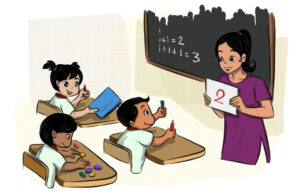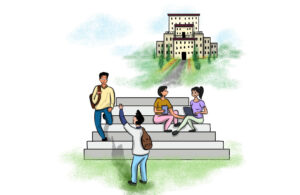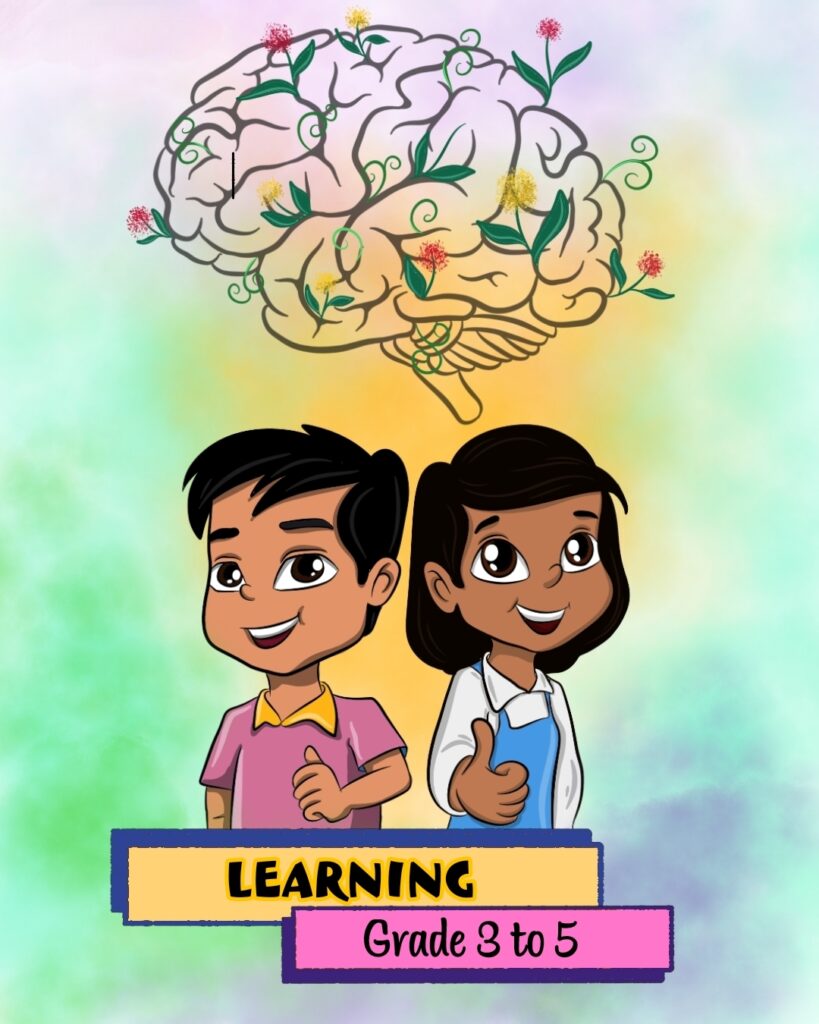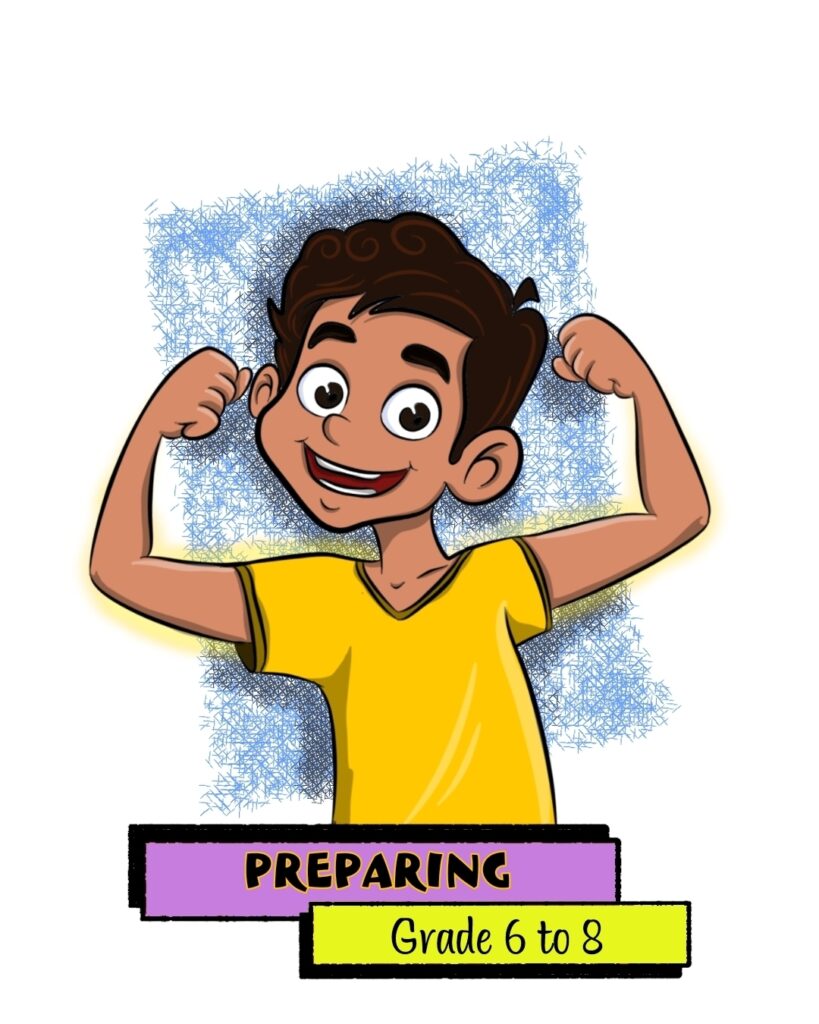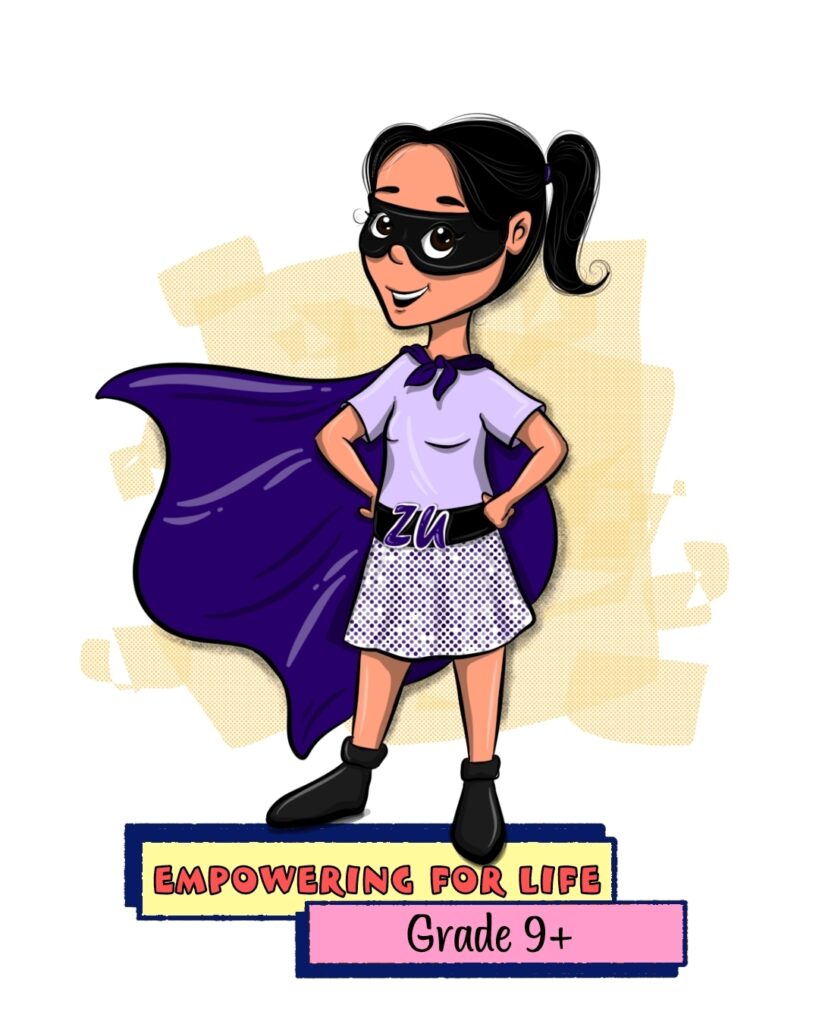Promoting Comprehensive Health Education
A 2018 survey by the Ministry of Women and Child Development found that 53% of children in India had experienced some form of sexual abuse.
You Heard that right, 53%, Every 2nd child in India. And you know what is more worrying, many of these children do not fully understand what has happened until later in life.
It’s very important to educate children from a young age about healthy relationships, boundaries, and consent, and to provide them with the tools and support they need to recognize and report any instances of sexual harassment or abuse. This can help prevent harm and ensure that children receive the help and support they need to report any situation which made them uncomfortable.
In our classes on Promoting comprehensive health education, we cover many topics including Consent and Healthy Relationships, Anatomy and Physiology, Puberty and Adolescent Sexual Development, Gender Identity and Expression, Sexual Orientation and Identity, Sexual Health, and Interpersonal Violence.
Teaching about these topics at a young age not only helps children in Health Promotion, and preparation for puberty and adolescence but also Prevention of sexual abuse and exploitation.
In our classes on Promoting Comprehensive Health Education, we enable students to
- Recognize developmental changes experienced by self and others during childhood and adolescence.
- Establish and maintain healthy relationships.
- Treat all people with dignity and respect with regard to their gender identity and sexual orientation.
- Give and receive consent in all situations.
- Engage in behaviours that prevent or reduce sexually transmitted infections (STIs), including HIV.
- Support others to avoid or reduce sexual risk behaviours.
- Avoid pressuring others to engage in sexual behaviours.
- Use appropriate health services to promote sexual and reproductive health.
Each lesson is designed meticulously with the help of global experts, our classes are not only age-appropriate but also culturally appropriate according to the region and state you are watching the classes in. We also customize the classes to fit the requirements of each school.
We follow eight step learning process to ensure life long positive impact on your children.
We are ZatchUp and we are dedicated to empowering your child to make healthy and safe life choices. Thank you
Grade wise learning objective
We follow an 8-step learning process to empower the kids for life. To learn more about our method of teaching, click here.
KG – Grade 2
- Step One: Step one is Understanding the Core Concept : We enable Students to comprehend core concepts related to our all health and safety courses such as consent, violence prevention
- Use medically accurate terms for body parts, including genitals.
- Identify the benefits of healthy family or caregiver relationships.
- Recognize the range of different family and peer relationships (e.g., nuclear, single parent, blended, intergenerational, cohabiting, adoptive, foster, same sex or gender).
- Identify the benefits of healthy peer relationships.
- Explain why it is wrong to tease or bully others based on personal characteristics (e.g., sex, race, ethnicity, culture, sexual orientation, appearance, abilities, mannerisms, the way one dresses or acts).
- Describe how to say ‘yes’ and ‘no’ to people, behaviors, or situations that could make one feel uncomfortable or unsafe.
- Identify different ways that disease-causing germs are transmitted.
- Identify ways to prevent the spread of germs that cause infectious diseases.
- Step Four: Fourth step is to learn Interpersonal Communication : We enable students to use interpersonal communication skills to enhance health and reduce all health risks.
- Demonstrate how to effectively communicate needs, wants, and feelings in healthy ways to promote healthy family and peer relationships.
- Demonstrate how to communicate care and concern for others to promote healthy relationships.
- Demonstrate how to effectively tell a trusted adult when they or someone they know is being hurt or feels unsafe.
Grade 3 – Grade 5
- Step One: Step one is Understanding the Core Concept : We enable Students to comprehend core concepts related to our all health and safety courses such as consent, violence prevention
- Describe the physical, cognitive, emotional, and social changes that occur during puberty.
- Explain how puberty and development can vary greatly and be normal.
- Describe internal and external reproductive body parts using medically accurate terms in a gender- neutral way (e.g., some people have a penis and some people have a vagina).
- Define gender identity and expression.
- Explain the difference between sex assigned at birth and gender identity and expression.
- Describe gender roles and expectations and how they can influence relationships.
- Define sexual orientation (i.e., patterns of emotional, romantic, or sexual attractions to men, women, or both sexes), including sense of identity, attractions, and related behaviors (e.g., heterosexual, gay/lesbian, bisexual).
- Describe the differences between sexual orientation and gender identity and expression.
- Describe personal characteristics related to sexual identity, orientation, and gender that make people different from one another.
- Identify characteristics of healthy relationships.
- Describe the benefits of healthy family or caregiver relationships.
- Describe the benefits of healthy peer relationships.
- List healthy ways to express affection, love, and friendship.
- Identify characteristics of a responsible family member or caregiver.
- Recognize the range of different family and peer relationships (e.g., nuclear, single parent, blended, intergenerational, cohabiting, adoptive, foster, same sex or gender).
- Step Two : Second step is to Understand Influences : We enable Students to analyze the influence of family, peers, culture, media, technology, and other factors on their health and Safety.
- Identify how peers influence relationships.
- Identify how culture influences relationships.
- Describe how media and technology influence personal relationships.
- Step Four: Fourth step is to learn Interpersonal Communication : We enable students to use interpersonal communication skills to enhance health and reduce all health risks.
- Demonstrate effective verbal and nonverbal communication skills to promote healthy family and peer relationships.
- Demonstrate giving and receiving verbal consent in interactions with family members, peers, and other adults.
- Explain how to be empathetic and compassionate toward others who are at a different stage of puberty from oneself.
- Explain how to be empathetic and compassionate toward others who have a different gender identity and expression or sexual orientation from oneself.
- Demonstrate how to effectively ask for help to deal with physical and emotional changes that occur during puberty.
- Demonstrate how to effectively communicate support for peers who are progressing through puberty.
- Step Six : Sixth step is to learn to Set Goals : We enable Students to set the right goals to enhance their health and keep themselves safe.
- Set a realistic goal to maintain personal hygiene during puberty.
- Track progress toward achieving a personal goal related to hygiene during puberty.
- Identify resources that can help achieve a personal goal related to hygiene during puberty.
- Step Eight : Eigth step is learn to Advocate : We enable Students to advocate not only for personal, but also for family, and community health.
- Demonstrate how to persuade others that is wrong to tease or bully others based on differences in gender identity or expression, sexual orientation, and other personal characteristics.
Grade 6 – Grade 8
- Step One: Step one is Understanding the Core Concept : We enable Students to comprehend core concepts related to our all health and safety courses such as consent, violence prevention
- Describe the physical, cognitive, emotional, and social changes that occur during puberty.
- Explain how puberty and development can vary greatly and be normal.
- Describe internal and external reproductive body parts using medically accurate terms in a gender- neutral way (e.g., some people have a penis and some people have a vagina).
- Describe the relationship between the menstrual cycle and conception.
- Describe the range of gender identities and expressions (e.g., cisgender, transgender, non-binary/ conforming, expansive).
- Analyze associations between a range of gender identities and expressions (e.g., cisgender, transgender, non-binary/conforming, expansive) and health.
- Differentiate between sex assigned at birth and gender identity and expression.
- Define sexual orientation (i.e., patterns of emotional, romantic, or sexual attractions to men, women, or both sexes), including sense of identity, attractions, and related behaviors (e.g., heterosexual, gay/lesbian, bisexual).
- Analyze associations between sexual orientation and health.
- Describe characteristics of healthy relationships.
- Describe healthy and unhealthy relationships.
- Describe healthy ways to express affection, love, and friendship.
- Explain the qualities of a healthy dating or sexual relationship.
- Describe the range of family and peer relationship structures (e.g., nuclear, single, parent, blended, intergenerational, cohabiting, adoptive, foster, same sex or gender).
- Describe the range of dating or sexual relationship structures.
- Explain the importance of talking with parents, caregivers, and other trusted adults about issues related to growth and development, relationships, sex, and sexual and reproductive health services.
- Describe how power differences (e.g., age, race/ethnicity, sex, gender, socio-economic status) impact relationships. ,
- Describe how gender role stereotypes impact goal-setting and decision-making in relationships. ,
- Explain the negative consequences of sending sexually explicit pictures, messages, or media (e.g., texting, chat groups, social media platforms, e-mail, websites, phone or tablet applications). ,
- Explain how viewing sexually explicit pictures, messages, or media can influence perceptions of, and expectations for, relationships.
- Explain why it is wrong to tease or bully others based on their gender or sexuality (e.g., gender identity and expression, sexual orientation, or sexual abstinence and activity), growth and development, or physical appearance or ability.
- Describe how bias, prejudice, and stigma related to gender and sexuality (e.g., gender identity and expression, sexual orientation, or sexual abstinence and activity) can impact health.
- Explain the benefits of respecting individual differences in gender and sexuality (e.g., gender identity and expression, sexual orientation, or sexual abstinence and activity), growth and development, or physical appearance or ability.
- Describe ways to show dignity and respect for all people with regard to their gender and sexuality (e.g., gender identity and expression, sexual orientation, or sexual abstinence and activity).
- Describe stereotypes, myths, and stigma about STIs, including HIV, and people living with acquired immunodeficiency syndrome (AIDS).
- Define consent and its importance for decisions about sexual behaviors. ,
- Describe how to communicate consent for all sexual behaviors.
- Explain how to receive consent and accept a lack or retraction of consent for sexual behaviors.
- Describe how consent cannot be fully present when there is an imbalance of power.
- Explain why a person who has experienced any form of sexual violence (e.g., sexual harassment, sexual assault, incest, rape, domestic violence, coercion, and dating violence) is never to blame for actions of the perpetrator.
- Describe how a person can call attention to or leave an uncomfortable and dangerous situation, including instances of sexual violence.
- Explain the importance of setting personal limits to avoid sexual risk behaviors. ,
- Describe the benefits of being sexually abstinent.
- Describe why sexual abstinence is the safest, most effective risk avoidance method of protection from STIs, including HIV, and unintended pregnancy.
- Describe the factors that protect against engaging in sexual risk behaviors. ,
- Describe the factors that contribute to engaging in sexual risk behaviors. ,
- Analyze ways common infectious diseases are transmitted.
- Explain how the most common STIs, including HIV, are transmitted.
- Describe usual signs and symptoms of the most common STIs and HIV.
- Explain the short- and long-term consequences of common STIs.
- Summarize which STIs can be cured and which can be treated.
- Describe the effectiveness of condoms in reducing the risk of HIV and other STIs (e.g., chlamydia, syphilis).
- Describe how pre-exposure prophylaxis (PrEP) and post-exposure prophylaxis (PEP) are safe and effective ways to prevent HIV infection and transmission.
- Describe the role of HIV treatment in preventing HIV transmission.
- Summarize ways to decrease the spread of STIs and HIV by not having sex, using condoms consistently and correctly when having sex, using PrEP, getting treatment for HIV and STIs, not touching blood or using hypodermic needles.
- Describe ways sexually active people can reduce the risk of unintended pregnancy.
- Describe the effectiveness of condoms in reducing the risk of unintended pregnancy.
- Describe methods of birth control (e.g., intrauterine device (IUD) or implant, shot, patch, ring, birth control pills, condoms, emergency contraception) including their effectiveness, required user action, and side effects.
- Describe the importance of using a condom for STI/HIV prevention at the same time as using a more effective contraceptive method (i.e., IUD or implant, shot, patch, ring, birth control pills) for pregnancy prevention.
- Explain the importance of using a condom for STI prevention at the same time as using other effective HIV prevention options including antiretroviral therapy (ART), PrEP, or PEP.
- Explain why the most effective contraceptive methods (i.e., IUD or implant, shot, patch, ring, birth control pills) do not prevent STIs, including HIV.
- Summarize ways to prevent unintended pregnancy, including not having sex and effective use of contraceptives.
- Identify the emotional, social, physical, and financial effects of becoming a parent.
- Describe what confidential care is and give specific instances when confidential care cannot be maintained.
- Describe young people’s rights to confidential services in their state.
- Describe young people’s legal rights to consent to sexual and reproductive health services, including STI/HIV testing, treatment (including ART, PrEP, PEP), and contraception.
- Explain what to expect from youth-friendly sexual health services and providers (e.g., hours, use of preferred names and pronouns).
- Describe the importance of ‘time-alone’ between young people and the healthcare provider (e.g., doctor, nurse) to discuss sexual and reproductive health and other sensitive health topics.
- Explain the importance of disclosing sexual activity to a healthcare provider.
- Explain the importance of preventative care including examinations, checkups, immunizations, and health screenings (e.g., breast and testicular self-examination, Pap smears, PrEP and PEP) needed to maintain sexual and reproductive health.
- Describe how the human papillomavirus (HPV) vaccination is a safe and effective way to avoid HPV infection, cancer, and other related health issues.
- Step Two : Second step is to Understand Influences : We enable Students to analyze the influence of family, peers, culture, media, technology, and other factors on their health and Safety.
- Explain how school rules, community norms, and public health policies or laws (e.g., minors’ access to confidential sexual health services) influence sexual relationships, practices, and behaviors.
- Explain how perceptions of norms influence healthy and unhealthy sexual relationships, practices, and behaviors.
- Explain how social expectations influence healthy and unhealthy sexual relationships, practices, and behaviors.
- Explain how personal values and beliefs influence sexual relationships, practices, and behaviors.
- Explain how friends, family, media, society, and culture can influence self-concept and body image.
- Describe how some health risk behaviors influence the likelihood of engaging in sexual risk behaviors (e.g., how alcohol use influences sexual risk behavior).
- Analyze how family and culture influence sexual relationships, practices, and behaviors.
- Analyze how school and community influence sexual relationships, practices, and behaviors.
- Analyze how media (e.g., pornography, sexually explicit material, social media) and technology influence sexual relationships, practices, and behaviors.
- Analyze how peers influence sexual relationships, practices, and behaviors.
- Step Three : Third step is to learn to access Information : We enable students to access valid information, products, and services to ensure good health and safety.
- Analyze the validity of sexual and reproductive health information (e.g., differentiate between neutral, fact-driven content and advertising, including sponsored content).
- Analyze the validity of sexual and reproductive health products.
- Analyze the validity of sexual and reproductive health services.
- Describe situations that call for professional sexual and reproductive healthcare services.
- Determine the availability of valid sexual and reproductive healthcare products.
- Access valid sexual and reproductive health information from home, school, or community.
- Locate valid sexual and reproductive healthcare products when needed or appropriate.
- Locate valid sexual and reproductive healthcare services when needed or appropriate.
- Step Four: Fourth step is to learn Interpersonal Communication : We enable students to use interpersonal communication skills to enhance health and reduce all health risks.
- Demonstrate the effective use of verbal and nonverbal communication skills to promote healthy relationships and sexual and reproductive health.
- Demonstrate how to manage personal information in electronic communications and when using social media (e.g., chat groups, e-mail, texting, websites, phone and tablet applications) to protect the sexual health of oneself and others.
- Demonstrate effective peer resistance skills to avoid or reduce sexual risk behaviors.
- Demonstrate effective negotiation skills to avoid or reduce sexual risk behaviors.
- Demonstrate giving and receiving verbal consent for all sexual behaviors between partners.
- Demonstrate how to effectively ask for assistance from parents, caregivers, or trusted adults to improve or maintain healthy relationships and sexual and reproductive health.
- Demonstrate how to effectively communicate support for peers when aspects of their sexuality (such as sexual activity, sexual abstinence, sexual orientation, gender expression, or gender identity) are different from one’s own.
- Step Five : Fifth step is to learn to make decisions : We enable students to use decision-making skills to enhance healthly behaviour.
- Identify circumstances that help or hinder making a decision related to a safe and potentially risky sexual situation.
- Determine when potentially risky sexual health-related situations require a decision.
- Distinguish when decisions about safe and potentially risky sexual health-related situations should be made individually or with others (e.g., sexual partner).
- Explain how family, culture, technology, media, peers, and personal beliefs affect a sexual health- related decision.
- Distinguish between healthy and unhealthy alternatives of a sexual health-related decision.
- Predict the potential outcomes of healthy and unhealthy alternatives to a sexual health-related decision.
- Choose a healthy alternative when making a sexual health-related decision.
- Analyze the effectiveness of a sexual health-related decision.
- Step Six : Sixth step is to learn to Set Goals : We enable Students to set the right goals to enhance their health and keep themselves safe.
- Set a realistic goal related to maintaining personal hygiene during puberty.
- Assess relationships, practices, and behaviors related to sexual and reproductive health.
- Set a personal goal to avoid or reduce the risk of pregnancy and transmission of HIV and other STIs.
- Assess the barriers to achieving a personal goal to avoid or reduce the risk of pregnancy and transmission of HIV and other STIs.
- Apply strategies to overcome barriers to achieving a personal goal to avoid or reduce the risk of pregnancy and transmission of HIV and other STIs.
- Use strategies and skills to achieve a personal goal to avoid or reduce the risk of pregnancy and transmission of HIV and other STIs.
- Step Seven : Seventh Step is learn Self-Management : We enable students to practice health-enhancing behaviours and reduce health risks.
- Explain the importance of being responsible for practicing sexual abstinence.
- Explain the importance of being responsible for practicing safer sexual behaviors.
- Analyze personal practices and behaviors that reduce or prevent sexual risk behaviors.
- Demonstrate practices and behaviors to improve the sexual and reproductive health of oneself and others.
- Commit to practicing healthy sexual behaviors.
- Step Eight : Eigth step is learn to Advocate : We enable Students to advocate not only for personal, but also for family, and community health.
- State a health-enhancing position on a sexual and reproductive health-related topic, supported with accurate information, to improve the health of self and others.
- Persuade others to avoid or reduce risky sexual behaviors.
- Persuade others to avoid teasing, bullying, or stigmatizing others based on their personal characteristics or aspects of their sexuality and gender (e.g., sexual activity, sexual abstinence, sexual orientation, gender expression, or gender identity).
- Collaborate with others to advocate for safe, respectful, and responsible relationships.
- Collaborate with others to advocate for opportunities to avoid or reduce risky sexual behaviors.
- Demonstrate how to adapt positive sexual health-related messages for different audiences.
Grade 9 – Grade 12
- Step One: Step one is Understanding the Core Concept : We enable Students to comprehend core concepts related to our all health and safety courses such as consent, violence prevention
- Explain how puberty and development can vary greatly and be normal.
- Describe internal and external reproductive body parts using medically accurate terms in a gender- neutral way (e.g., some people have a penis and some people have a vagina).
- Summarize the relationship between the menstrual cycle and conception.
- Describe the human sexual response cycle, including the role of hormones and pleasure.
- Describe the range of gender identities and expressions (e.g., cisgender, transgender, non-binary/ conforming, expansive).
- Analyze associations between a range of gender identities and expressions (e.g., cisgender, transgender, non-binary/conforming, expansive) and health.
- Differentiate between sex assigned at birth and gender identity and expression.
- Describe sexual orientation (i.e., patterns of emotional, romantic, or sexual attractions to men, women, or both sexes), including sense of identity, attractions, and related behaviors (e.g., heterosexual, gay/lesbian, bisexual).
- Analyze associations between sexual orientation and health.
- Analyze characteristics of healthy relationships.
- Summarize the qualities of a healthy dating or sexual relationship.
- Explain how to build and maintain healthy family and peer relationships.
- Describe the range of family and peer relationship structures and dynamics (e.g., nuclear, single parent, blended, intergenerational, cohabiting, adoptive, foster, same sex or gender).
- Describe the range of dating and sexual relationship structures.
- Summarize the importance of talking with parents, caregivers, and other trusted adults about issues related to growth and development, relationships, sex, and sexual and reproductive health services.
- Analyze how power differences (e.g., age, race/ethnicity, sex, gender, socio-economic status) impact relationships. ,
- Examine how gender role stereotypes impact goal-setting and decision-making in relationships. ,
- Explain the negative consequences of sending sexually explicit pictures, messages, or media (e.g., e-mail, texting, chat groups, social media platforms, websites, phone and tablet applications).
- Explain how viewing sexually explicit pictures, messages, or media can influence perceptions of, and expectations for, relationships.
- Analyze the impact of technology and social media on peer, dating, and sexual relationships. ,
- Evaluate effective strategies for dealing with difficult relationships with family members, peers, and dating or sexual partners.
- Summarize why it is wrong to tease or bully others based on their gender and sexuality (e.g., gender identity or expression, sexual orientation, sexual abstinence and activity).
- Summarize how bias, prejudice, and stigma related to gender and sexuality (e.g., gender identity and expression, sexual orientation, or sexual abstinence and activity) can impact health.
- Summarize the benefits of respecting individual differences in gender and sexuality (e.g., gender identity and expression, sexual orientation, or sexual abstinence and activity), growth and development, or physical appearance or ability.
- Summarize ways to show dignity and respect for all people with regard to their gender and sexuality (e.g., gender identity or expression, sexual orientation, sexual abstinence and activity).
- Analyze stereotypes, myths, and stigma about STIs, including HIV, and people living with AIDS.
- Define consent and its importance for decisions about sexual behaviors. ,
- Summarize why individuals have the right to refuse sexual contact.
- Explain why it is an individual’s responsibility to verify that all sexual contact is consensual.
- Describe how to communicate consent for all sexual behaviors.
- Explain how to receive consent and accept a lack or retraction of consent.
- Describe how consent cannot be fully present when there is an imbalance of power.
- Explain why a person who has experienced any form of sexual violence (e.g., sexual harassment, sexual assault, incest, rape, domestic violence, coercion, and dating violence) is never to blame for actions of the perpetrator.
- Analyze the relationship between using alcohol and other drugs and sexual risk behaviors.
- Analyze situations that could lead to being pressured to having sex.
- Analyze techniques that are used to coerce or pressure someone to have sex.
- Describe how a person can call attention to or leave an uncomfortable or dangerous situation, including instances of sexual violence.
- Summarize the importance of setting personal limits to avoid risky sexual behavior. ,
- Describe the importance of shared responsibilities for avoiding sexual activity and preventing sexual risk behaviors.
- Justify why abstinence from sex is the safest, most effective risk avoidance method of protection from STIs, including HIV, and unintended pregnancy.
- Analyze the factors that protect one against engaging in sexual risk behaviors. ,)
- Analyze the factors that contribute to engaging in sexual risk behaviors.
- Summarize how the most common STIs and HIV are transmitted.
- Summarize the signs and symptoms of the most common STIs, including HIV.
- Summarize the problems associated with asymptomatic STIs and HIV.
- Summarize the short- and long-term consequences of the most common STIs, including HIV.
- Analyze methods of birth control (e.g., IUD or implant, shot, patch, ring, birth control pills, condoms, emergency contraception) including their effectiveness, required user action or proper use, and possible side effects.
- Explain why the most effective contraceptive methods (i.e., IUD or implant, shot, patch, ring, birth control pills) do not prevent STIs, including HIV.
- Summarize the importance of using condoms consistently and correctly to reduce risk of STIs, including HIV, and unintended pregnancy.
- Analyze the effectiveness of perfect use vs. typical use of condoms in reducing the risk of STIs (e.g., chlamydia, syphilis), including HIV, and unintended pregnancy.
- Explain the importance of using a condom for STI/HIV prevention at the same time as using a more effective contraceptive method (i.e., IUD or implant, shot, patch, ring, birth control pills) for pregnancy prevention.
- Analyze the importance of using condoms with all sexual partners.
- Summarize ways to prevent common STIs, including HIV, and unintended pregnancy.
- Describe how pre-exposure prophylaxis (PrEP) and post-exposure prophylaxis (PEP) are safe and effective ways to prevent HIV infection and transmission.
- Describe the role of HIV treatment (e.g., antiretroviral therapy (ART)) in preventing HIV transmission.
- Analyze the emotional, social, physical, and financial effects of becoming a parent.
- Explain what confidential care is and give specific instances when confidential care cannot be maintained.
- Describe the importance of ‘time-alone’ between young people and the healthcare provider (e.g., doctor, nurse) to discuss sexual and reproductive health and other sensitive health topics.
- Explain the importance of disclosing sexual activity to a healthcare provider.
- Describe young people’s rights to confidential services in their state.
- Summarize young people’s legal rights to consent to sexual and reproductive health services, including STI/HIV testing, treatment (including ART, PrEP, PEP), and contraception.
- Explain what to expect from youth-friendly sexual health services and providers (e.g., hours, use of preferred names and pronouns).
- Explain the importance of preventative care including examinations, checkups, immunizations, and health screenings (e.g., breast and testicular self-examination, Pap smears) necessary to maintain sexual and reproductive health.
- Explain the importance of STI and HIV testing and counseling if sexually active.
- Explain the importance of contraceptive counseling and services if sexually active.
- Explain the basic side effects and costs of treatment for STIs.
- Explain the basic side effects and costs of treatment for HIV.
- Explain why it is important to know the STI and HIV status of oneself and of a sexual partner.
- Describe how the Human papillomavirus (HPV) vaccination is a safe and effective way to avoid HPV infection, cancer, and other HPV-related health issues.
- Step Two : Second step is to Understand Influences : We enable Students to analyze the influence of family, peers, culture, media, technology, and other factors on their health and Safety.
- Explain how public health policies and state laws influence sexual health beliefs, relationships, practices, and behaviors.
- Analyze how culture supports and challenges sexual health beliefs, relationships, practices, and behaviors.
- Analyze how peers and perceptions of norms influence healthy and unhealthy sexual beliefs, relationships, practices, and behaviors.
- Analyze how personal attitudes, values, and beliefs influence healthy and unhealthy sexual health relationships, practices, and behaviors.
- Analyze how some health risk behaviors influence the likelihood of engaging in risky sexual behaviors (e.g., alcohol- and other drug-use).
- Analyze how laws, rules, and regulations influence behaviors related to sexual and reproductive health.
- Analyze how school and community settings influence personal sexual health beliefs, relationships, practices, and behaviors.
- Analyze how media (e.g., pornography, sexually-explicit images, social media) and technology influence personal, family, and community sexual health beliefs, relationships, practices, and behaviors.
- Differentiate the relevant influences, including family, culture, peers, school, community, media, technology and public health policies, on sexual and reproductive health practices and behaviors, including self-concept and body image.
- Analyze the factors that influence opportunities to obtain safe, accessible, equitable, and affordable products and services that support sexual and reproductive health for oneself and others.
- Step Three : Third step is to learn to access Information : We enable students to access valid information, products, and services to ensure good health and safety.
- Evaluate the validity of sexual and reproductive health information (e.g., differentiate between scientifically or medically accurate content and advertising, including sponsored content).
- Evaluate the validity of sexual and reproductive healthcare products.
- Evaluate the validity of sexual and reproductive healthcare services.
- Determine the accessibility of valid sexual and reproductive healthcare products.
- Determine when professional sexual and reproductive healthcare services may be required.
- Determine the accessibility of valid sexual and reproductive healthcare services.
- Use resources that provide valid sexual and reproductive health information.
- Use valid sexual and reproductive healthcare products when needed or appropriate.
- Use valid sexual and reproductive healthcare services when needed or appropriate.
- Step Four: Fourth step is to learn Interpersonal Communication : We enable students to use interpersonal communication skills to enhance health and reduce all health risks.
- Demonstrate effective communication skills to promote healthy relationships and sexual and reproductive health.
- Demonstrate effective peer resistance, negotiation, and collaboration skills to avoid engaging in sexual risk behaviors.
- Demonstrate giving and receiving verbal consent for all sexual behaviors between partners.
- Demonstrate effective communication strategies to prevent, manage, or resolve interpersonal conflicts.
- Demonstrate how to effectively ask for assistance from parents, caregivers, or trusted adults to improve or maintain sexual health.
- Demonstrate how to effectively communicate support for peers whose aspects of their sexuality (such as sexual activity, sexual abstinence, sexual orientation, gender, or gender identity) are different from one’s own.
- Step Five : Fifth step is to learn to make decisions : We enable students to use decision-making skills to enhance healthly behaviour.
- Examine barriers to making a decision related to healthy relationships and sexual and reproductive health.
- Determine the value of applying thoughtful decision making regarding sexual health related situations or experiences.
- Justify when individual or collaborative decision making is appropriate regarding sexual situations or experiences.
- Analyze how family, culture, technology, media, peers, and personal beliefs affect a sexual health-related decision.
- Generate alternatives when making a decision related to healthy relationships and sexual and reproductive health.
- Predict potential short- and long-term consequences of alternatives of sexual and reproductive health-related decisions.
- Choose a healthy alternative when making a sexual and reproductive health-related decision.
- Evaluate the effectiveness of sexual and reproductive health-related decisions.
- Step Six : Sixth step is to learn to Set Goals : We enable Students to set the right goals to enhance their health and keep themselves safe.
- Assess personal practices and behaviors related to sexual and reproductive health.
- Set a realistic personal goal to avoid or reduce the risk of pregnancy and transmission of HIV and other STIs.
- Assess the barriers to achieving a personal goal to avoid or reduce the risk of pregnancy and transmission of HIV and other STIs.
- Develop a plan to attain a personal goal to avoid or reduce the risk of pregnancy and transmission of HIV and other STIs.
- Implement strategies, including self-monitoring, to achieve a personal goal to avoid or reduce the risk of pregnancy and transmission of HIV and other STIs.
- Use strategies to overcome barriers to achieving a personal goal to avoid or reduce the risk of pregnancy and transmission of HIV and other STIs.
- Formulate a long-term personal plan to achieve a goal to avoid or reduce the risk of pregnancy and transmission of HIV and other STIs.
- Step Seven : Seventh Step is learn Self-Management : We enable students to practice health-enhancing behaviours and reduce health risks.
- Analyze the role of individual responsibility for sexual and reproductive health.
- Evaluate personal practices and behaviors that reduce or prevent sexual risk behaviors.
- Demonstrate practices and behaviors to improve the sexual and reproductive health of oneself and others.
- Commit to practicing healthy sexual behaviors.
- Step Eight : Eigth step is learn to Advocate : We enable Students to advocate not only for personal, but also for family, and community health.
- Use peer and societal norms, based on accurate health information, to formulate a health-enhancing message about promoting healthy sexuality and avoiding or reducing risky sexual behaviors.
- Persuade and support others to avoid or reduce risky sexual behaviors.
- Persuade and support others to make positive and healthy choices about sexual relationships, practices, and behaviors.
- Collaborate with others to advocate for improving personal, family, and community sexual and reproductive health.
- Encourage school and community environments and policies to protect and affirm promote the sexual health of others with regard to aspects of their sexuality and gender (such as sexual activity, sexual abstinence, sexual orientation, and gender expression or identity).
- Adapt sexual health messages and communication techniques for reach a specific target audience.
- Persuade school and community leaders about the importance of ensuring there are safe, accessible, equitable, and affordable sexual and reproductive health opportunities, products, and services to improve the health of oneself and others.

